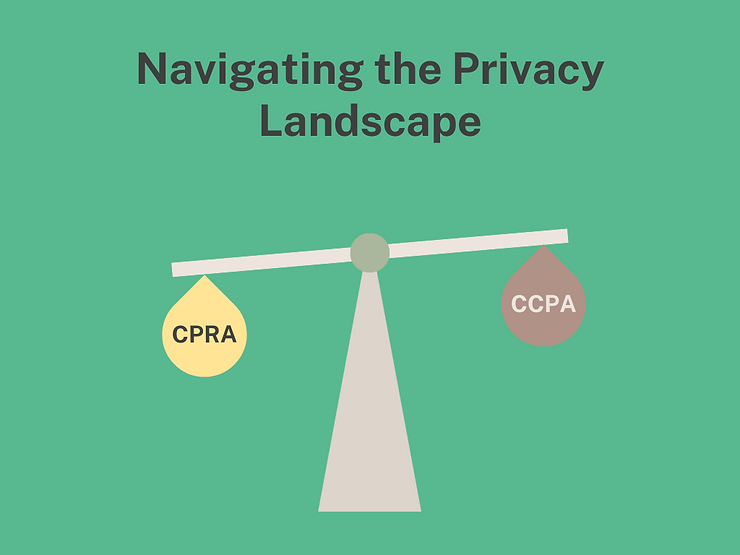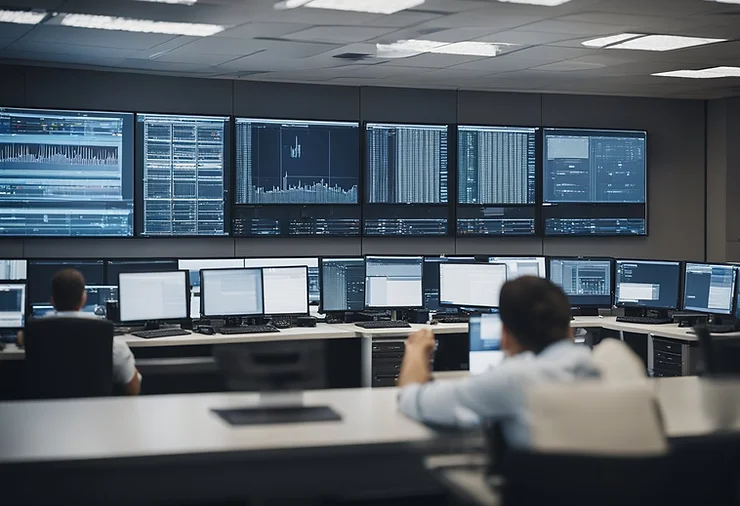If you are a service provider that handles sensitive data from your customers, you may have heard of ISO 27001 and SOC 2.
These are the two frameworks that can help you demonstrate your commitment to information security and data protection. But what are the differences between them (ISO 27001 vs SOC2), and which one should you choose for your organization?
In this blog post, we will explain what ISO 27001 and SOC 2 are, what they have in common, how they differ and what are the things that you need to know about them
Introduction
What is ISO 27001?
ISO 27001, also known as ISO/IEC 27001, is a set of standards and requirements for an Information Security Management System (ISMS). An ISMS is a systematic approach to managing the security of your information assets, such as financial information, employee data, intellectual property, and third-party data.
An ISMS consists of policies, procedures, processes, and controls that aim to ensure three key aspects of data protection: availability, confidentiality, and integrity.
ISO 27001 was published jointly by the International Electrotechnical Commission and the International Organization for Standardization (ISO), an independent, non-governmental organization that develops international standards covering technology and manufacturing.
ISO 27001 is applicable to organizations of any size or industry that want to establish, implement, operate, monitor, review, maintain, and improve their ISMS.
To achieve ISO 27001 certification, an organization must undergo an audit by an accredited certification body that verifies that the ISMS conforms to the requirements of the standard.
The certification is valid for three years, subject to periodic surveillance audits.
Here is a sample ISO Certificate from one of our clients.

What is SOC 2?
SOC 2, or Service Organization Control 2, is a framework for auditing and reporting on the security controls of service providers that handle customer data. The framework was developed by the American Institute of Certified Public Accountants (AICPA), the professional association for CPAs in the United States.
SOC 2 defines five categories of security controls, called Trust Service Criteria (TSC), that service providers should implement to protect customer data:
- Security: The system is protected against unauthorized access, use, modification, damage, or loss.
- Availability: The system is available for operation and use as agreed upon.
- Processing integrity: The system processing is complete, accurate, timely, and authorized.
- Confidentiality: The information designated as confidential is protected as agreed upon.
- Privacy: The personal information collected, used, retained, disclosed, and disposed of is in conformity with the commitments in the entity’s privacy notice and with the criteria set forth in Generally, Accepted Privacy Principles (GAPP).
Service providers can choose which TSCs are relevant to their services and customers. For example, a cloud storage provider may focus on security, availability, and confidentiality, while a payroll service provider may also include processing integrity and privacy.
Security and Availability are usually compulsory.
To obtain a SOC2 report, a service provider must engage an independent CPA or accountancy organization to perform an audit of its security controls based on the chosen TSCs. There are two types of SOC2 reports:
- Type 1: A report that describes the service provider’s system and assesses whether the design of the security controls meets the TSCs at a specific point in time.
- Type 2: A report that describes the service provider’s system and assesses whether the design and operation of the security controls meet the TSCs over a period of time (usually six months to a year).
Unlike ISO 27001 certification, SOC 2 reports are not standardized or accredited by a central authority. They are based on the auditor’s opinion and may vary in scope, format, and quality.
SOC 2 reports are intended for internal use by the service provider and its customers and are not publicly available.
Here is a link to one of the SOC2 reports that are publicly available on the internet:
What do ISO 27001 and SOC 2 have in common?
ISO 27001 and SOC 2 share some common objectives and benefits for service providers and their customers:
- They both provide a framework for implementing and evaluating security controls to protect customer data.
- They both demonstrate compliance with industry best practices and regulatory requirements for information security and data protection.
- They both enhance trust and credibility among customers and stakeholders by providing independent assurance of security performance.
- They both help identify and mitigate security risks and improve security posture.
How do ISO 27001 and SOC 2 differ? Does ISO 27001 cover SOC2?
Despite their similarities, ISO 27001 and SOC 2 have some key differences that service providers should consider when choosing which one to pursue:

Focus:
- ISO 27001: ISO 27001 is focused on helping organizations implement and maintain an information security management system (ISMS). An ISMS is a framework for managing information security risks and protecting organizational assets.
- SOC 2: SOC 2 is focused on helping organizations demonstrate that they have implemented effective security, availability, processing integrity, confidentiality, and privacy controls.
SOC 2 reports are typically used by organizations that provide cloud services or other types of technology services.
Scope:
- ISO 27001: ISO 27001 is a comprehensive standard that covers all aspects of information security, including risk management, access control, physical security, and incident response.
- SOC 2: SOC 2 is a narrower standard that focuses on a specific set of Trust Services Criteria (TSCs). There are five TSCs: security, availability, processing integrity, confidentiality, and privacy. Organizations can choose to focus on any or all of the TSCs, depending on their specific needs.
Applicability:
- ISO 27001: ISO 27001 is applicable to all industries and organizations of all sizes.
- SOC 2: SOC 2 is also applicable to all industries, but it is often used by cloud service providers and technology companies.
Certification:
- ISO 27001: ISO 27001 certification is performed by an accredited certification body.
- SOC 2: SOC 2 attestation is performed by a licensed CPA.
Cost:
- ISO 27001: ISO 27001 certification is more expensive than SOC 2 attestation. This is because ISO 27001 requires a more comprehensive approach to information security.
- SOC 2: SOC 2 attestation is usually less expensive than ISO 27001 certification. This is because SOC 2 is more flexible and allows organizations to focus on the specific TSCs that are most relevant to their business.
Time to achieve:
- ISO 27001: It can take several months or even years to achieve ISO 27001 certification, depending on the size and complexity of the organization.
- SOC 2: SOC 2 attestation can typically be achieved in a shorter period of time, such as a few weeks or months.
Recognition:
- ISO 27001: ISO 27001 is an internationally recognized standard.
- SOC 2: SOC 2 is more recognized in the United States, but it is becoming increasingly popular worldwide.
Implementation process for ISO 27001 vs SOC2
ISO 27001
Step 1: Establish an ISMS. An ISMS is a framework for managing information security risks and protecting organizational assets. Organizations need to establish an ISMS and document the processes and procedures they have in place to manage information security.
Step 2: Implement the necessary security controls. ISO 27001 includes a list of recommended security controls, but organizations can choose the specific controls that are most relevant to their business.
Step 3: Conduct an internal audit. Organizations need to conduct an internal audit to assess the effectiveness of their ISMS and security controls.
Step 4: Engage an accredited certification body to perform a certification audit. An accredited certification body will perform a certification audit to assess whether the organization’s ISMS and security controls meet the requirements of ISO 27001.
Step 5: Receive ISO 27001 certification. Once the certification audit is complete, the organization will receive ISO 27001 certification.
SOC2
Step 1: Choose which TSCs to focus on. There are five TSCs: security, availability, processing integrity, confidentiality, and privacy. Organizations can choose to focus on any or all of the TSCs, depending on their specific needs.
Step 2: Document your security controls. Organizations need to document the security controls they have in place to support the TSCs they have chosen to focus on.
Step 3: Engage a licensed CPA to perform an attestation. A licensed CPA will perform a SOC 2 attestation to assess whether the organization’s security controls are effective and meet the requirements of the TSCs.
Step 4: Publish the SOC 2 attestation report. Once the SOC 2 attestation is complete, the organization can publish the report to demonstrate to customers and other stakeholders that they have implemented effective security controls.
Which one should you choose: ISO 27001 or SOC 2?
The answer to this question depends on several factors, such as your business objectives, customer expectations, industry standards, regulatory requirements, and available resources. Here are some general guidelines to help you decide:
- Choose ISO 27001 if you want to establish a comprehensive and robust ISMS that covers all aspects of information security, not just customer data. ISO 27001 is suitable for organizations that want to achieve a high level of security maturity and excellence.
- Choose SOC 2 if you want to demonstrate compliance with specific security controls that are relevant to your services and customers. SOC 2 is suitable for organizations that want to meet the expectations and requirements of their U.S. customers and markets.
- Choose both ISO 27001 and SOC 2 if you want to leverage the strengths of both frameworks and gain a competitive edge in the global market. ISO 27001 and SOC 2 can complement each other and provide a comprehensive and credible security assurance for your organization and your customers.
Here are some additional factors to consider when choosing between ISO 27001 and SOC 2:
- Cost: ISO 27001 certification is typically more expensive than SOC 2 attestation. This is because ISO 27001 has a more rigorous certification process.
- Customer requirements: Some customers may require their suppliers to be ISO 27001 certified. If this is the case, then ISO 27001 certification is the best option.
If you are still unsure which standard to choose, it is best to consult with your customers.
Updates for 2023
ISO 27001:2022
The most recent version of ISO 27001, published in 2022, includes several significant changes, such as:
- Increased emphasis on risk management and cybersecurity threats
- Updated terminology and definitions
- Enhanced focus on organizational context and leadership commitment
- Stronger emphasis on information security culture
You can read more about the updates in this post
SOC 2
SOC 2 is not a formal standard, but the AICPA periodically releases updates to the SOC 2 Trust Services Criteria. The most recent update, issued in 2018, introduced new criteria related to:
- Security in the cloud
- Data privacy
- Supply chain security
Conclusion
ISO 27001 and SOC 2 are two frameworks that can help service providers improve their security posture and demonstrate their commitment to information security and data protection.
They have some common objectives and benefits, but they also have some key differences in terms of scope, applicability, certification, and maintenance.
Service providers should consider these factors when choosing which one to pursue or whether to pursue both.
Ultimately, the decision should be based on what best serves the interests of your organization and your customers.





